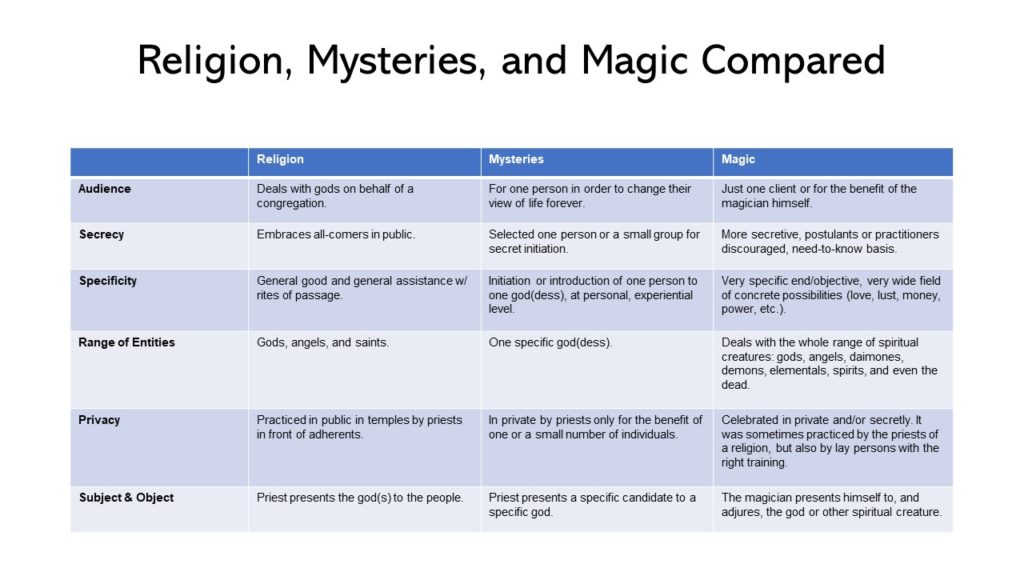When interpreting the Mass, it’s important to keep in mind that it’s a religious rite, and so it’s not possible to capture the main idea behind it simply with categories that apply to magic(k), mysticism, or the mysteries of OTO.

This is a slide from my Minerval lecture summarizing Stephen Skinner’s treatment of these categories in Introduction to Techniques of Graeco-Egyptian Magic. I use this to show what is distinctive about initiation into a mystery school (such as M∴M∴M∴) versus attending Mass or doing private ritual at home. But it’s also useful for seeing what is distinctive about the Mass as a religious rite.
One of the main objectives of the Mass is implied by the Priest right at the start of the ritual: it’s to administer the virtues to the breathren. I think the simplest, most direct interpretation of that statement is that the ritual imparts the spirit of Thelema or the New Aeon to the public, both through its liturgy and through the eucharist itself.
To put a finer point on it, I disagree with an interpretation of the Mass according to which the Priest is exemplifying communing with his Holy Guardian Angel or Crossing the Abyss. That would be a mystical or magical interpretation. I think that renders the actions of the clergy excessively personal and private and tends to obscure the public cultic dimension. I think it also leads to the conclusion that the Priest is feeding his Holy Guardian Angel to the congregants (eww).
I have a long, detailed argument about what exactly is embodied in the eucharist. The short, simple answer is that it embodies the spirit that gave rise to the Book of the Law. So in yet another sense, the Book of the Law becomes your sustenance and comfort when you consume the bread and wine.
Now the spirit that gave rise to the Book of the Law is also the Holy Guardian Angel. (Crowley calls it Aleph, Harpocrates, and a bunch of other names.) So it’s easy to see why one would think that the Mass involves the Priest communing with his HGA. It’s actually not a stupid interpretation. And I could even accept an interpretation which said that the Priest communed with his HGA somewhere along the way in the ritual—or even that the congregants are there to do something similar. It’s not going to detract from it.
I just don’t think it’s the main objective of the ritual. It’s clear from the liturgy, from the presence of a congregation, from the ritualists taking up ecclesiastical roles, and just from things that Crowley said about the ritual when he was alive that the ritual is not meant to be simply mystical or magical, it’s meant to impart a particular kind of spirit (for lack of a better word) to the public. It’s meant to serve and help structure the self-understanding of a community.
